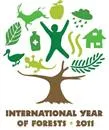It has been quite some time since my last post, and I sincerely apologize! I have been very busy, but nevertheless I have kept on researching.
I have found another reference regarding the Fuegian
Lakooma, the only other one that I had found had been written by Lucas Bridges (the first "white" person born in Tierra del Fuego), and he did not say too much about it. This new reference was recorded by a Catholic priest, Martin Gusinde, who visited Tierra del Fuego in the early 1900s.
He wrote several books about his trips to Fuegia and in one of them [1] about the native "canoe" people, the Yamana, he writes about
Lakuma (as he spells it):
It threatens evry canoe, lifts out the occupants, and sucks them down into the depths. Each Lakuma has the habit of flattening himself out on the surface of the water so that his back protrudes a little. He waits in this fashion until a canoe approaches. It is hard to recognize the Lakuma from a distance. People often say that outwardly he is like a whale; others compare him to the calamary hilka (Loligo subulata or squid) which is not which is not uncommon in those regions; still others to the ray. He is also said to be large and very strong, "a great monster like a huge worm" [cited in English]/, according to Spencer:80. If the occupants of a canoe have unwittingly come within reach of the monster, they rarely succeed in escaping disaster, and only if the Lakuma is sleeping or in a good mood.
... The people in the east eat the meat of the Lakuma, which is something we in the west would never do... Lakuma seriously harm everyone who comes within their reach
Spencer, quoted by Gusinde, said the following:[2]
Yaghan[i.e. Yamana] showed us special belt of kelp which natives are too frightened to cross because a great monster like a huge worm, called Wongara, drags them and their boats under water. Wongara is a general word for worm.
So it seems to be some Fuegian Kraken, which has some similarities with the
Cuero creature which peoples the lakes and rivers of Northern Patagonia. But Spencer's deptiction: a worm, rings a bell! I have posted about maps published before Columbus discovered America which mentioned
Giants fighting against Dragons:
The Nova Cosmographia per totum circulum map reconstructed by the scholar Dana Durand from a manuscript compiled by Brother Fredericus ca. 1450, has the legend “dy Risen vechten und streiten wider dy lint wurm”—Giants fighting and quarreling against the lindworm [*] ; once again a reference to giants and ‘dragons’. The
[*] Note on the Lindworm: A wingless dragon of Northern Europe, from Swedish ‘lind’ (flexible body) and ‘orm’ (serpent).
Could Lakooma and Wongara be the mythical lindworm?
Lucas Bridges father, Thomas, compiled a Yamana - English dictionary [3] in which he has one entry on "Wongara": "Wön-gara(nda) (A) spider(s), justt like a spider". So is it a worm or an aqutic spider?
Sources
[1] Gusinde, Martin, (1961).
The Yamana: the life and thought of the water nomads of Cape Horn. pp. +1167
[2] Sir Baldwin Spencer, (1931).
Spencer's last journey: being the journal of an expedition to Tierra del Fuego. Clarendon Press. pp 80.
[3] Bridghes, Thomas, (1933).
Yamana-English: a dictionary of the speech of Tierra del Fuego. pp. 625.
Patagonian Monsters -
Cryptozoology, Myths & legends in Patagonia2011 International Year of Forests Copyright 2009-2011 by Austin Whittall ©



